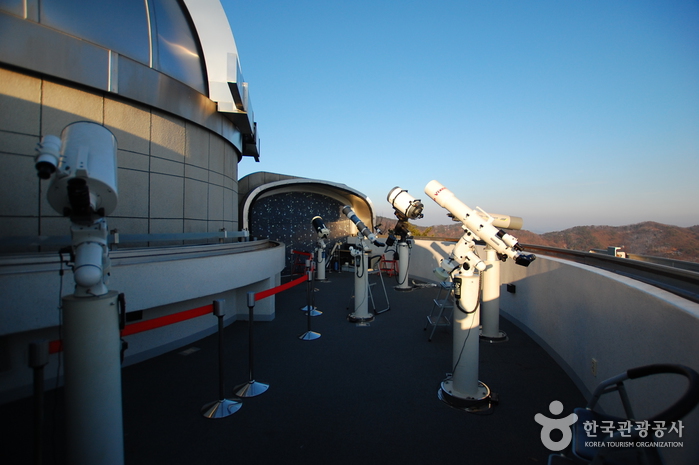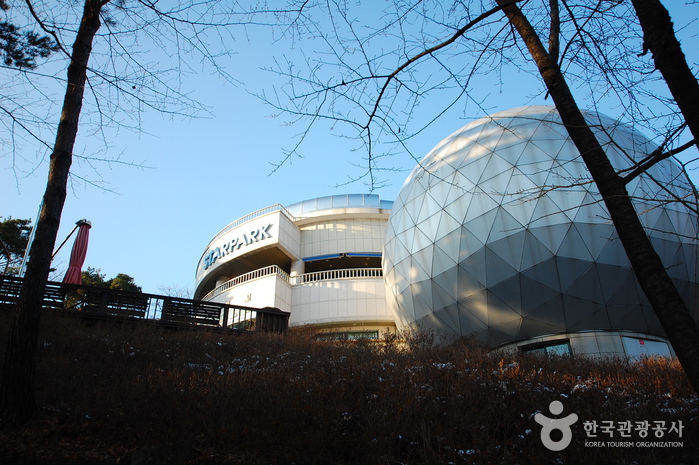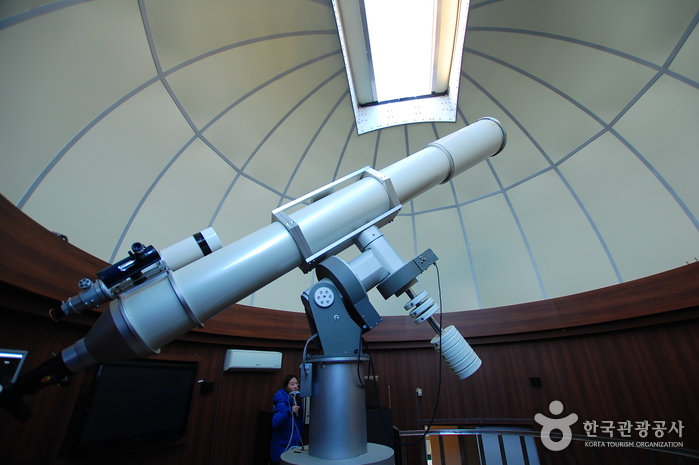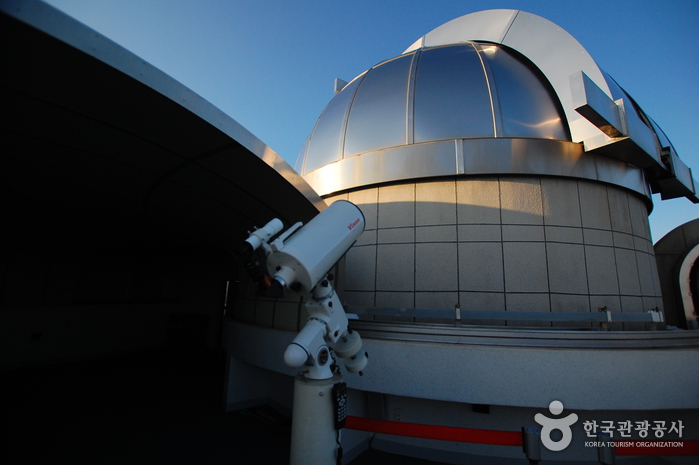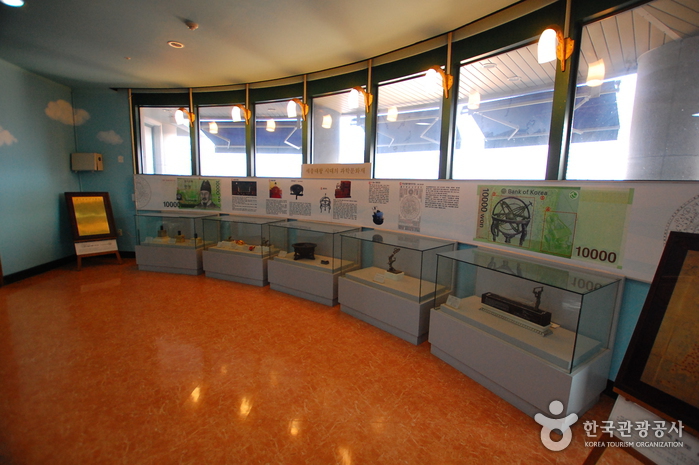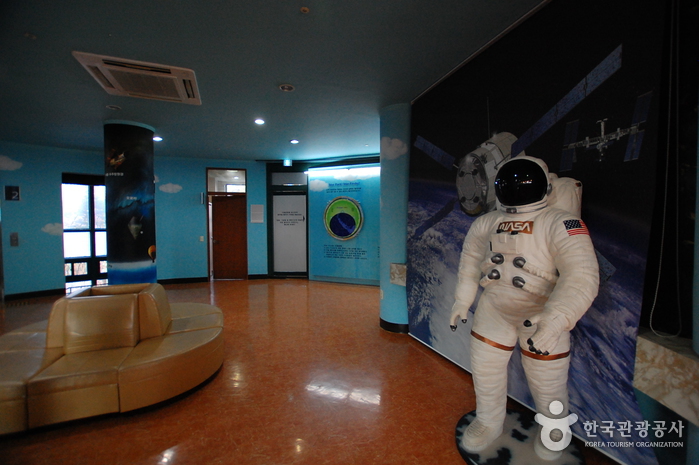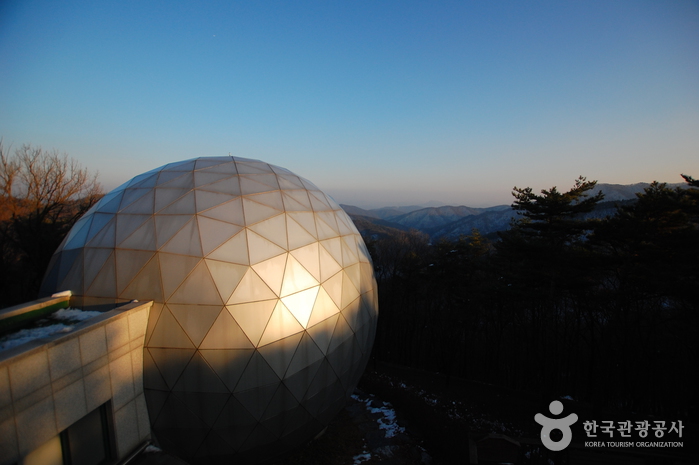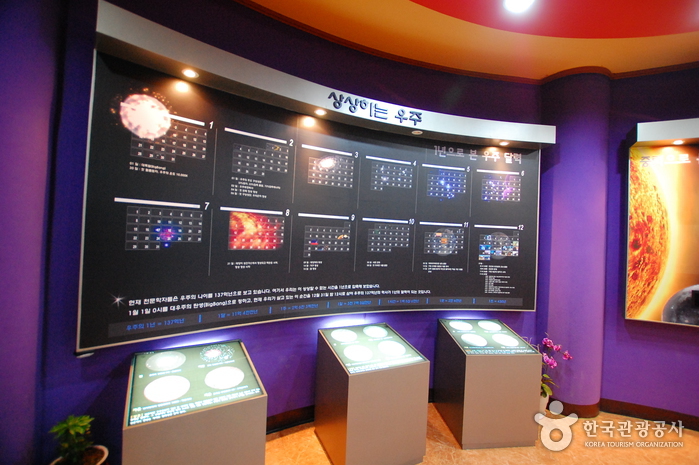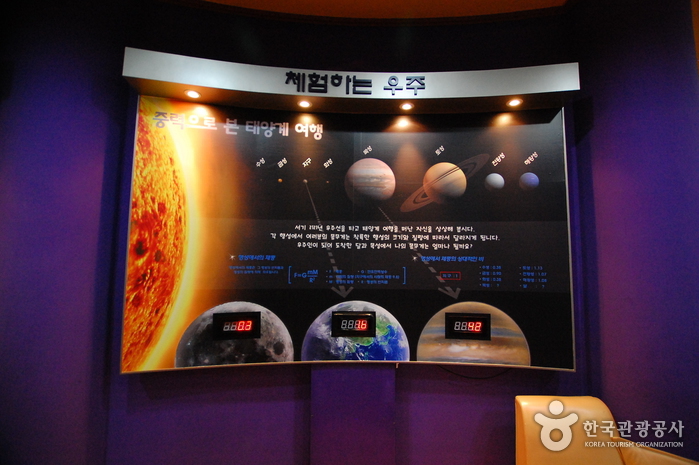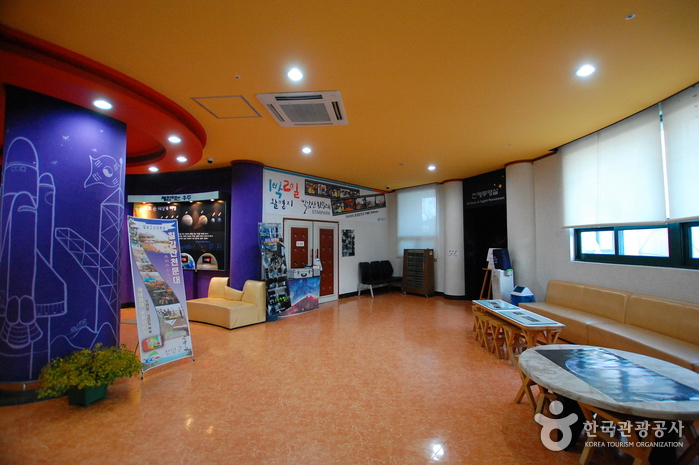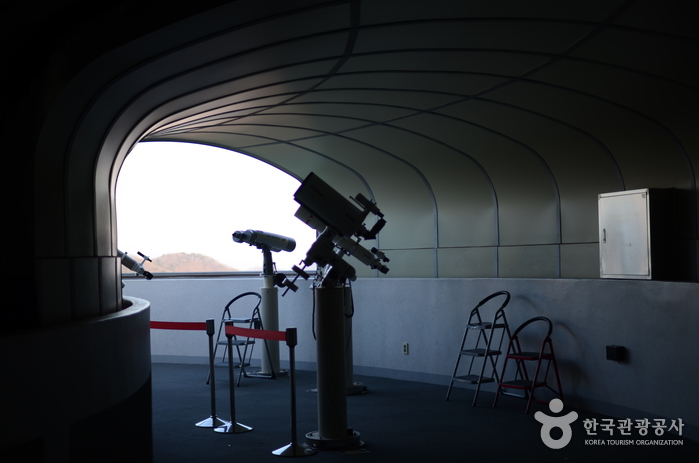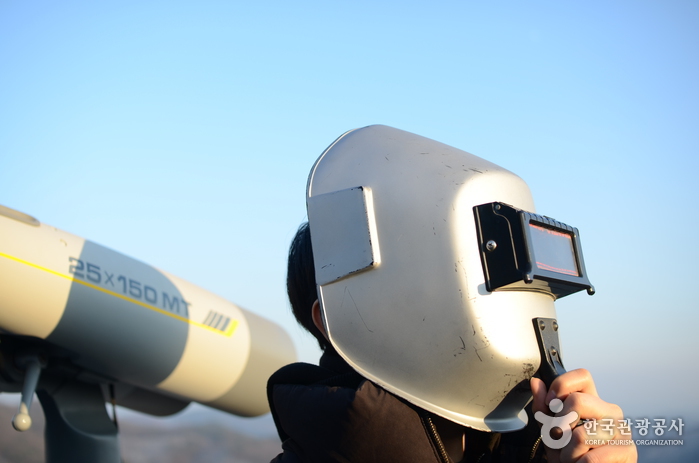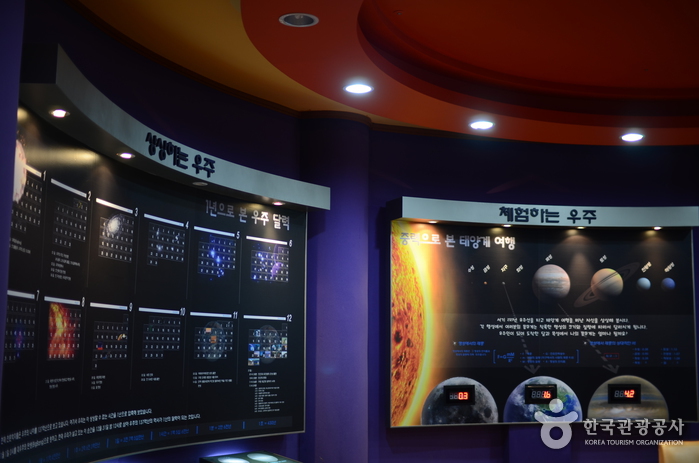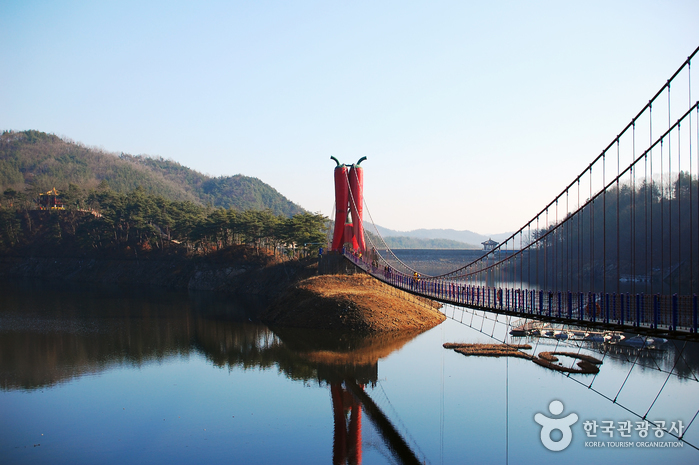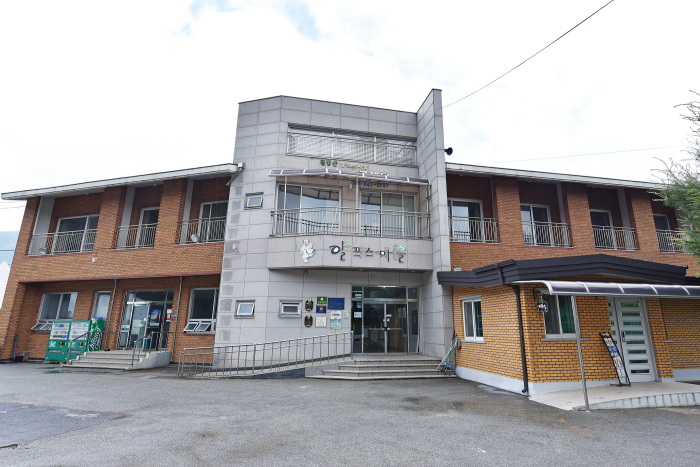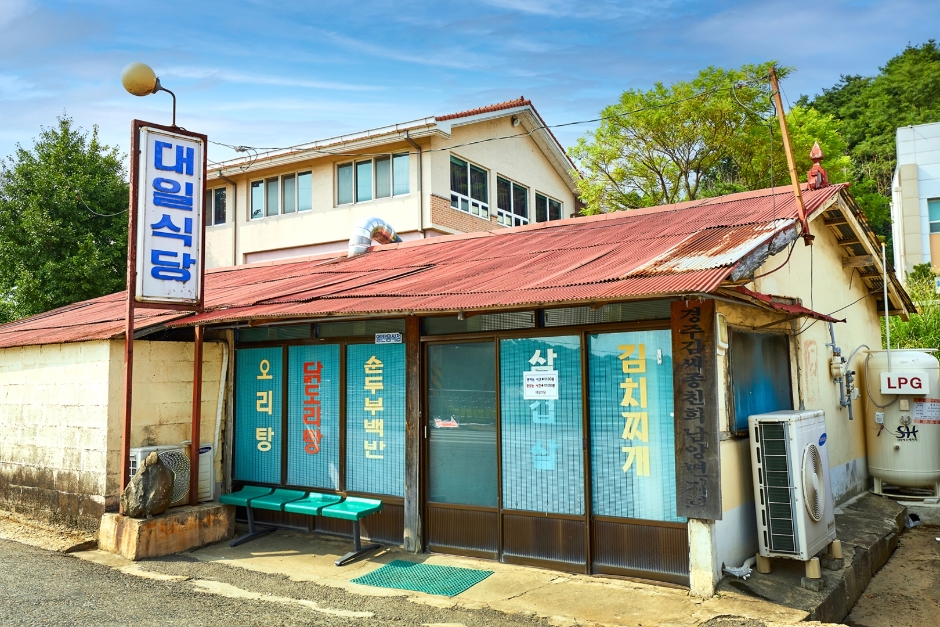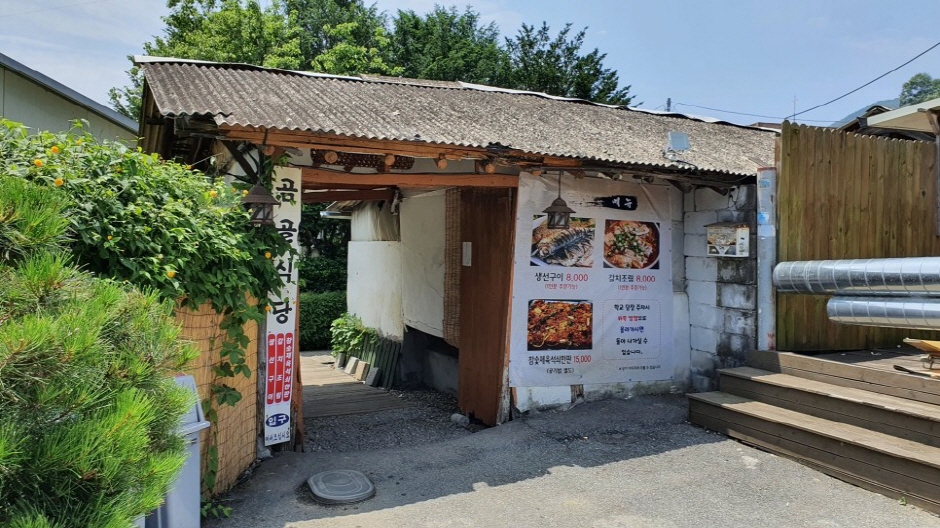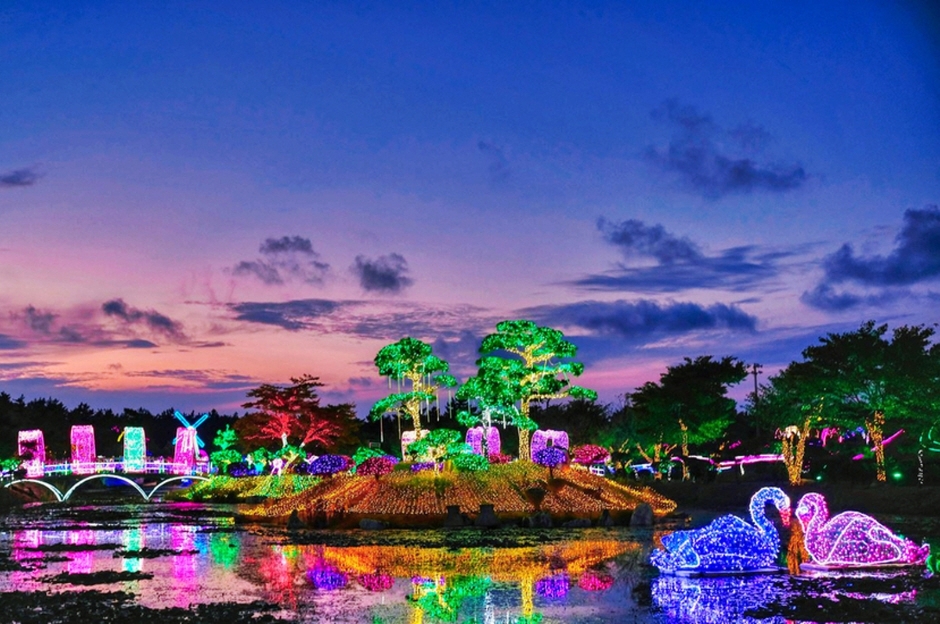Starpark (Chilgapsan Astrnomical Observatory)
칠갑산천문대 스타파크
📍 178-46 Hantigogae-gil, Jeongsan-myeon, Cheongyang-gun, Chungcheongnam-do
Introduction
Starpark, also known as Chilgapsan Astronomical Observatory, is nestled within Chilgapsan Provincial Park in Cheongyang-gun, Chungcheongnam-do. This observatory is a science museum with a focus on astronomy and space, catering to both the general public and students. Conveniently, it's just a five-minute walk from the parking area. The facility is housed in a three-story structure. On the first floor, visitors can enjoy a three-dimensional dome theater and an audiovisual room. The second floor houses a publicity center and an observation deck. The observatory’s main observation room is on the third floor and features Korea’s largest refracting telescope (APO 304 mm), which is used primarily for viewing sunspots and prominences during the day. Additionally, there’s an auxiliary observation room equipped with Korea's first 180-degree hemispherical three-stage sliding system. This room is designed for nighttime stargazing and is fitted with a 400-milimeter reflecting telescope for observing planets, star clusters, and nebulae. Children are particularly fond of the 12-meter geo-massive astronomical projection room, where they can experience 5D images. For those wishing to extend their visit, accommodations are available at Namcheon-ri Sanchon Ecological Village or nearby Alps Village. Staying in these locations provides easy access to both the Chilgapsan Astronomical Observatory and the Cheonjangho Suspension Bridge, making for a comprehensive educational and recreational experience.
Homepage
🗺 Location
178-46 Hantigogae-gil, Jeongsan-myeon, Cheongyang-gun, Chungcheongnam-do
✏ Details
Activity Fees
Adults (19 years and older) 3,000 won / Middle and high school students 2,000 won / Elementary school students 1,000 won
Restrooms
Available
Available Facilities
Structure
size
Land area: 1,990㎡
Building area (3F): 1,006㎡
Main failities
3F: Main observatory room, sub observatory room, outdoor
observatory
2F: Experience hall, meeting room, lab, lounge, mini library,
outdoor observatory
1F: Audiovisual room, projection room for celestial bodies,
exhibition hall
Observation device
- 304mm APO refracting telescope
- 400mm RC reflecting
telescope
- 260mm 6th aspheric reflecting telescope
- 200mm catadioptric
telescope
- 150mm Newtons reflecting telescope
- 127mm Maksutov's cassegrainian
telescope
- 120mm ED APO refracting telescope
🔎 Information
Inquiries
+82-41-940-2790
Parking Facility
Available
Closed
Mondays (the following day if Monday is a public holiday), Seollal (Lunar New Year's Day) and Chuseok (Korean Thanksgiving Day) holidays
Opening Hours
November-March 10:00-21:00
April-October 10:00-22:00
* Admission interval is 30 minutes.
Last admissions during the day are 11:00 and 17:00.
Last admission for solar observation is 15:00.
Evening admission is limited to 100 visitors per day. Please purchase evening admission tickets on-site in advance.
* The opening hours may vary by season, so please check in advance.
April-October 10:00-22:00
* Admission interval is 30 minutes.
Last admissions during the day are 11:00 and 17:00.
Last admission for solar observation is 15:00.
Evening admission is limited to 100 visitors per day. Please purchase evening admission tickets on-site in advance.
* The opening hours may vary by season, so please check in advance.
Experience Guide
[Astronomical Projection Room] Visitors can view films about astronomy and space and receive explanations about seasonal constellations.
[Main Observation Room] This room features a 300-milimeter telescope, the largest refracting telescope in Korea, and is used for observing the main celestial objects visible on the day of the visit.
[Auxiliary Observation Room] Observations of significant astronomical phenomena, such as planets, nebulae, and star clusters, are tailored to the current season.
[Audio-Visual Room] Guests can watch three-dimensional films that delve into various aspects of space science.
[Main Observation Room] This room features a 300-milimeter telescope, the largest refracting telescope in Korea, and is used for observing the main celestial objects visible on the day of the visit.
[Auxiliary Observation Room] Observations of significant astronomical phenomena, such as planets, nebulae, and star clusters, are tailored to the current season.
[Audio-Visual Room] Guests can watch three-dimensional films that delve into various aspects of space science.
